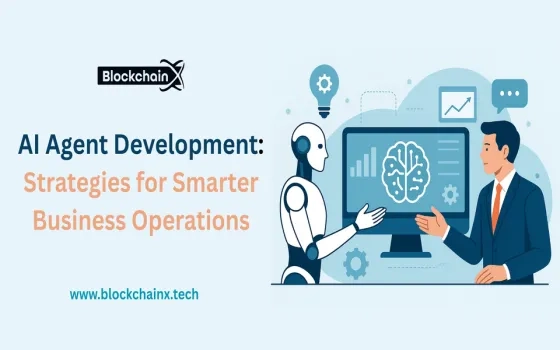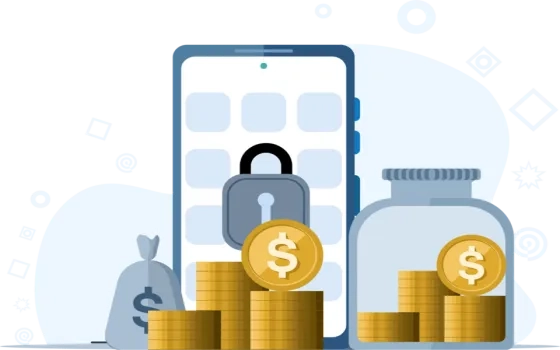In the world of cryptocurrency, initial offerings such as ICOs (Initial Coin Offerings) and IDOs (Initial DEX Offerings) have become key mechanisms for launching new projects. These events allow projects to raise funds, attract investors, and make their token available to a broad audience. However, with the rapid growth of the Web3 ecosystem, the competition to conduct a successful IDO or ICO is fierce. For every successful launch, there are several others that fail due to improper preparation, poor planning, or lack of investor trust. This blog aims to provide you with a comprehensive pre-launch checklist to ensure your IDO or ICO stands out and is successful.
Ultimate Pre-Launch Checklist for a Winning IDO or ICO in 2025
In the world of cryptocurrency, initial offerings such as ICOs (Initial Coin Offerings) and IDOs (Initial DEX Offerings) have become key mechanisms for launching new projects. These events allow projects to raise funds, attract investors, and make their token available to a broad audience. However, with the rapid growth of the Web3 ecosystem, the competition to conduct a successful IDO or ICO is fierce. For every successful launch, there are several others that fail due to improper preparation, poor planning, or lack of investor trust. This blog aims to provide you with a comprehensive pre-launch checklist to ensure your IDO or ICO stands out and is successful.
1. Define Your Tokenomics Clearly
Tokenomics is arguably one of the most important elements when it comes to launching a successful IDO or ICO. Tokenomics refers to the economic model of your token, including how it will be distributed, how many tokens will be in circulation, and the mechanisms driving its demand.
Before launching your token, ensure the following aspects of your tokenomics are clearly defined:
- Total Supply: Define how many tokens will be available, ensuring that the total supply aligns with your project’s long-term vision.
- Vesting Schedule: Implement a vesting schedule for the team and early investors to avoid price dumping post-launch.
- Utility: Your token should serve a clear purpose within your ecosystem. Whether it’s used for governance, staking, or access to platform features, the token’s utility should be well-defined.
- Inflation and Deflation Mechanisms: Consider whether your token will have deflationary features (e.g., token burns) or inflationary features (e.g., staking rewards) that impact its value over time.
Why It Matters:
Poor tokenomics often leads to price volatility, low liquidity, and long-term failure of the project. Be transparent about the allocation and distribution to build trust with your investors and community.
2. Create a Solid Whitepaper and Litepaper
A whitepaper is a comprehensive document that outlines the purpose of your project, its technical architecture, business model, tokenomics, and roadmap. It is your project's most critical document and serves as a tool to build credibility with potential investors.
Here’s what your whitepaper should include:
- Introduction: Provide a clear explanation of the problem your project seeks to solve.
- Solution: Present how your project solves the problem, the technology behind it, and how it stands out from existing solutions.
- Tokenomics: Offer detailed information about the token distribution, supply, demand, and any rewards or incentives tied to your token.
- Roadmap: Outline key milestones, such as platform launch, token release, partnerships, and scalability plans.
- Team: Include detailed bios of the founding team, advisors, and core developers to build credibility.
For marketing purposes, you should also create a litepaper, which is a simplified version of the whitepaper. The litepaper will serve as a high-level introduction to your project, making it easier for potential investors to digest without having to go through the technical details.
Why It Matters:
Investors and backers will evaluate your project based on the depth and quality of your whitepaper. A poorly written or vague whitepaper can raise red flags, whereas a well-thought-out whitepaper instills confidence in your project.
3. Build a Functional MVP or Prototype
A Minimum Viable Product (MVP) or prototype is a working version of your platform that demonstrates its core functionality. It’s essential to show that your project has a viable product or service before launching an ICO or IDO.
Here’s why an MVP is crucial for your IDO/ICO:
- Proof of Concept: An MVP shows potential investors that your idea is more than just a concept. It proves that your project has the technical feasibility to deliver.
- Trust and Transparency: Having a working prototype builds trust with investors who want to see tangible progress.
- Feedback: An MVP allows you to get feedback from early users and investors, which can be used to improve the final product.
Whether it’s a DeFi platform, NFT marketplace, or GameFi application, ensure that your MVP demonstrates your token’s utility and showcases your product’s potential.
Why It Matters:
Having an MVP is vital to attracting investors who are more likely to trust a project that has a working product over one with only promises.
4. Assemble a Strong Team and Advisor Network
Your project’s success heavily relies on the strength of the team behind it. Investors want to know that your team has the necessary skills, experience, and expertise to execute the project successfully.
Here’s how to build an effective team:
- Core Team: Ensure that your core team includes experienced blockchain developers, smart contract specialists, marketers, and project managers.
- Advisors: Advisors who have experience in the crypto or blockchain industry can provide guidance, mentorship, and credibility. Advisors also often help build trust with potential investors.
- Transparency: It’s important to show the public who is behind the project. This is why LinkedIn profiles and team introductions are crucial.
Also, ensure that team members and advisors undergo KYC (Know Your Customer) and AML (Anti-Money Laundering) compliance checks to foster transparency and reduce the risk of fraud.
Why It Matters:
A strong, transparent team makes your project appear more legitimate and reduces the risk of scams, which is crucial for attracting investors.
5. Develop a Robust Marketing and Community Strategy
Marketing is a key component of a successful ICO or IDO. If you don’t have a strong marketing plan, your token sale might struggle to generate interest, even if the product is promising.
Here’s how to build a robust marketing strategy:
- Social Media Presence: Engage with your audience on Twitter, Telegram, Reddit, Discord, and other platforms. Regularly post updates about your project’s progress and engage in meaningful discussions with your community.
- PR Campaigns: Work with crypto media outlets to promote your token sale and raise awareness.
- Influencer Partnerships: Partner with influencers in the crypto space who can help promote your project to their followers.
- Bounty and Referral Programs: Create programs that reward users for helping promote your project, whether by writing articles, creating videos, or referring others.
Why It Matters:
A well-executed marketing strategy helps you build a dedicated community, which is essential for the success of your IDO or ICO. A strong community can drive momentum, generate word-of-mouth marketing, and increase demand for your token.
6. Smart Contract Development and Audit
The security of your IDO or ICO is paramount. This is where smart contract development and audits come into play.
Here’s why it matters:
- Smart Contracts: Your IDO/ICO will rely heavily on smart contracts to facilitate token sales, token distribution, and other operations. These smart contracts must be well-written, secure, and free of bugs.
- Audit: Having your smart contract audited by a reputable third-party auditor is a non-negotiable step. Audits help identify vulnerabilities and ensure that the contract performs as expected without any risks to investors.
Several third-party services offer smart contract audits, and it’s crucial to choose a firm with a strong reputation in the industry.
Why It Matters:
Smart contract vulnerabilities can lead to catastrophic consequences, such as loss of funds or a security breach. Audits help you mitigate these risks and build investor confidence.
7. Choose the Right Launchpad or Platform
When planning an IDO or ICO, selecting the right launchpad or platform is essential for the success of your fundraising campaign.
Consider the following when choosing a platform:
- Platform Reputation: Choose a reputable platform with a large user base. A platform with a strong community increases the likelihood of attracting investors.
- Type of Offering: Whether you’re choosing an IDO, ICO, or IEO, make sure that the platform supports your offering type and aligns with your project’s goals.
- Blockchain Compatibility: Ensure that the launchpad supports your project’s blockchain. For example, if your project is based on Ethereum, it would make sense to use an Ethereum-based launchpad.
Why It Matters:
The launchpad you choose can significantly affect the reach and success of your token sale. Select a platform that aligns with your project’s goals and target market.
8. Legal and Regulatory Compliance
Compliance with legal and regulatory standards is crucial for your project’s long-term success and for avoiding legal issues down the road.
Ensure that your project complies with:
- KYC/AML Regulations: Most countries require ICOs and IDOs to implement Know Your Customer (KYC) and Anti-Money Laundering (AML) processes for investors.
- Securities Laws: Research the legal requirements for token sales in the jurisdictions your project operates in. In some cases, tokens may be classified as securities, requiring compliance with securities laws.
- Jurisdictional Considerations: Make sure your project adheres to the regulations of the country in which your ICO or IDO is being launched.
Why It Matters:
Legal compliance ensures that your project is not exposed to unnecessary legal risks, and it protects both you and your investors.
9. Plan Your Liquidity and Listing Strategy
Liquidity is key to the success of your ICO or IDO. You’ll need to ensure that your token is easily tradable on various exchanges, which requires a solid liquidity plan.
Here’s how to plan your liquidity:
- DEX Listings: List your token on decentralized exchanges (DEXs) to increase its liquidity and make it accessible to the broader crypto community.
- CEX Listings: If possible, aim to list your token on centralized exchanges (CEXs), which can offer more visibility and trading volume.
- Liquidity Pools: Consider creating liquidity pools on DEXs to ensure that buyers can easily trade your token post-launch.
Why It Matters:
Without liquidity, your token may struggle to gain traction. By ensuring liquidity through various exchange listings and liquidity pools, you can increase demand for your token.
10. Run Testnets and Public Demos
Before launching your IDO or ICO, it’s important to run testnets and public demos to ensure everything works smoothly.
Testnets are environments where you can simulate transactions and stress-test the platform to make sure it performs as expected. Public demos give potential investors a sneak peek at your project in action, which can increase confidence in your offering.
Why It Matters:
Running testnets and demos helps identify issues before the actual launch, reducing the likelihood of technical glitches and improving user experience.
Conclusion
Launching a successful IDO or ICO is not a simple task. It requires careful planning, strong tokenomics, legal compliance, and a solid marketing strategy. By following this checklist, you can ensure that you’re fully prepared for a successful token launch that generates interest, attracts investors, and builds a strong community around your project.
Remember, the preparation you put into the pre-launch stage will directly impact the success of your IDO or ICO. The more effort you put in, the more likely your project will thrive in the competitive crypto space.















